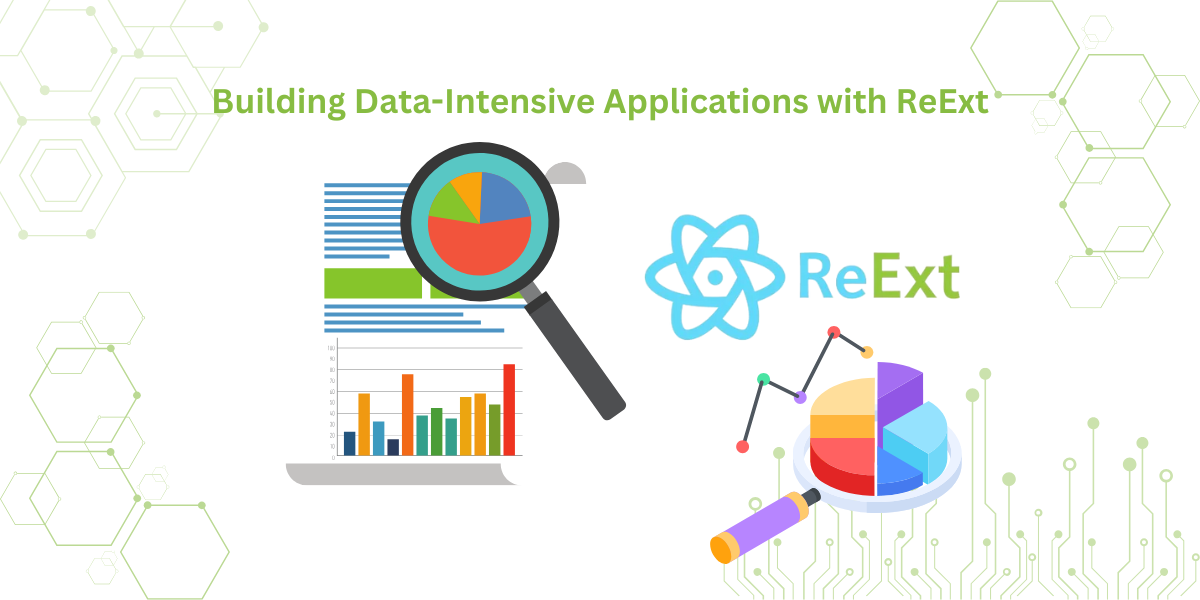An Introduction To A JavaScript Web Framework
JavaScript is a universal language that supports event-driven, functional, and imperative programming. Its versatility makes it useful on both the server and client-side of the application. As a result, it has a considerable market share, and it is often regarded as the language of the web. Developers initially used it only for client-side applications, but nowadays, it can be utilized on the server-side as well.
Software frameworks are essentially an abstraction layer over the language to provide generic functionality while giving developers room to customize based on their requirements. Moreover, developers often prefer frameworks due to their adaptability. With the help of frameworks, developers can create responsive applications with minimal effort. The framework ensures uniform styling throughout the website. This article will expand on how Sencha can help you achieve more as a developer with JavaScript web framework and many other useful tools.
What is Sencha?

Sencha is a complete JavaScript-based ecosystem comprised of the JavaScript web framework and different tools that ease cross-platform web and mobile application development. The JavaScript framework contains over 140 high-quality and well-optimized components. As a result, Sencha helps you create high-performing, interactive, and visually appealing designs for your application.
What Does Sencha Have to Offer?

Here are some of the services and features Sencha provides:
Does it have Lifecycle Management Tools?
Sencha comes with Sencha cmd tools that provide lifecycle management libraries. You can use Sencha Cmd to optimize code and build applications. It provides scaffolding, code minification, production build generation, and other basic development functionality. Using modern web technologies, Sencha cmd tools allow you to create a near-native app experience. The package management system also comes with Sencha cmd. It helps you share the framework code and packages across multiple applications. The code generation can scaffold whole applications and broaden those applications with new MVC or MVVM parts. Sencha Cmd also provides a lightweight webserver to serve files from localhost if no hosting service is available. A powerful logging highlight also facilitates investigation.
Can it Accelerate Application Development?
Sencha Architect is a visual application builder that helps you create Ext JS applications in an intuitive environment. You can easily use each Ext JS part in your application. Sencha Architect also allows you to see what your clients will see as you build your application. It saves design time by eliminating the need to type most standard code. Boilerplate speeds up the development of both desktop and mobile applications. This is because adjusting Ext JS UI part properties and designs in a WYSIWYG window limits human errors common to manual coding.
In addition, Sencha Architect comes with a wide range of customizable components such as D3, Calendar, Pivot Grids, and Exporter for modern and classic toolkits. Even if nothing fits your design, we still have you covered. That is because, with Sencha Architect, you can design custom components and even build your framework extensions. You can also choose from our massive library of extensions.
Then there is Sencha Themer. Themer is the Sencha application theming tool. You can create and import themes from Themer into your application using Architect. You can also alter the themes you have imported inside the application to match your design theme.
Who is using Sench Ext JS?
One customer is Icube. They are an industrial digitization company in Switzerland, who have used Sencha Ext JS to power their highly sophisticated digital platforms, MilkPay and EVA, to automate transactions and improve operational efficiencies for local milk producers and cheese factories.
Being able to evolve quickly was very important to us. We are growing fast and require a solid technology which would enable us to implement new features and customize them pretty
quickly. Ext JS delivers exactly that, plus it provides us the scalability that has made MilkPay so successful.—Gaylord Falque, Product Development Manager, Icube.
Is it Easy to Debug in Sencha?
Next, Sencha comes with a debugging tool, Sencha Inspector. Sencha Inspector provides direct access to components, classes, objects, etc. It gives you troubleshooting insights for any Sencha application created with Ext JS 4.2.0, 5.x, 6.x, or Touch 2.1.0 and more.
Inspector also allows you to investigate your application code for issues. You can overtest parts, check the number of design runs, and further develop application execution. Inspector even allows you to design your Sencha applications by letting you modify Ext JS and Sencha Touch Sass factors. Since Inspector comes bundled with Sencha Cmd, you can see topic changes in real-time. Using the remote investigating capacities of Inspector, you can also troubleshoot Sencha applications running on your smartphone (including Android and iOS).
Does it Support Code Testing Tools?
Sencha WebTestIt is a lightweight IDE optimized for building UI web tests with Proctor or Selenium. It enables cross-browser testing on Android, Windows, Linux, and macOS. It also allows you to select and execute the whole test suite or simply the failed chunk. In addition, you can run tests on a single endpoint or numerous endpoints in parallel and execute tests from the CLI with custom configs.
Finally, it comes integrated with Atlassian JIRA and TestRail out of the box. This means you can create a JIRA issue with a single command or import test cases from TestRail and report and share results with stakeholders. WebTestIt allows you to pick the test execution workflow. Simply put, you can save time and money by automating the process and reducing the resources required to debug your code.
Can I Use Custom Themes in Sencha?
Sencha Themer lets you style Ext JS, ExtAngular, and ExtReact applications and make them look extraordinary. You can make custom subjects using graphical tools without composing code. Themer also allows you to customize components and examine tools to set fine-grained styles and create subject bundles with dynamic templates. With the imaginative shading range in Themer, it’s not difficult to apply different shading blends to various part states. The shading range shows the base, body foundation, and text style tone continuously lighter and hazier tones. Likewise, there is a range that helps you choose colors from Material Design. The executive Themer textual style permits you to quickly add web text styles from Google textual styles.
Using ExtAngular and ExtReact adds 140 components to your Angular or React applications in a single, affordable, and expertly maintained bundle. Engineers can utilize the implicit Material plan motivating topic, disposing of the need to build custom styles, making it simpler to create a new, current client experience with negligible exertion. Subjects can likewise be effortlessly changed or stretched out inside Themer, empowering engineers and planners to make persuasive topics without composing a solitary line of code.
Ready to get started building amazing Javascript apps with a powerful web framework?
Accelerate web application development with an enterprise-ready framework, components and tools built to work together seamlessly. Ext JS includes 140+ UI components, such as HTML5 calendar, grids, pivot grid, D3 adapter, trees, lists, forms, menus, toolbars, panels, windows, and much more. Hundreds of user extensions are also available from the Sencha community.
Tools like Sencha Inspector, Sencha Architect, Sencha Fiddle, Sencha Cmd are compelling reasons to use the Sencha Ext JS framework. Sencha is undoubtedly one of the best JavaScript framework out there.

User experience matters just as much as the services a company offers. To meet this…

The latest industry reports show that around 60% of web applications rely on data grids.…

In the current age where data is wealth, almost 2.5 quintillion bytes of data are…









